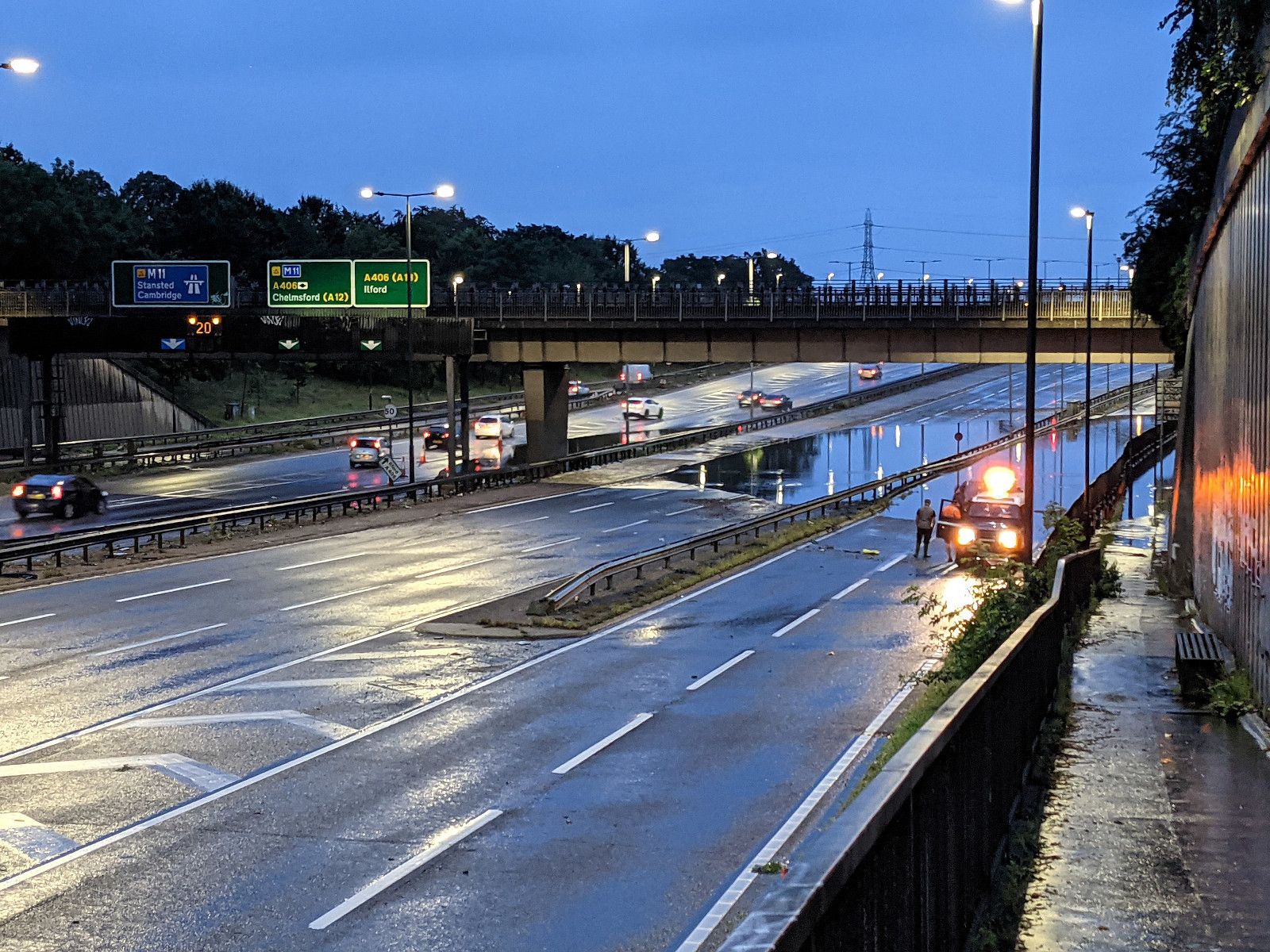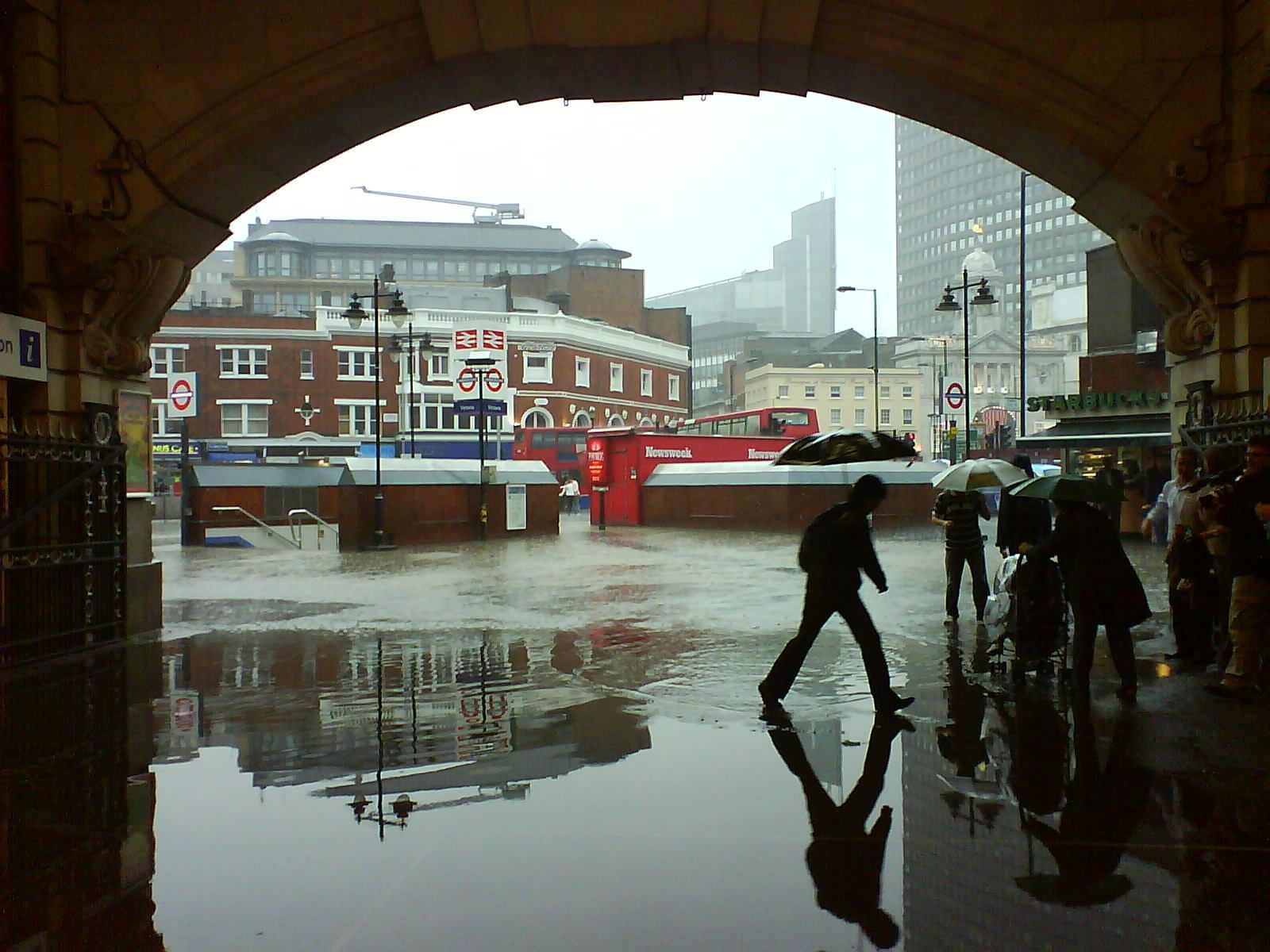Tell Westminster City Council: this is a climate emergency
Just as Westminster City Council starts consulting on its Climate Action Plan, climate chaos has hit our streets.


Residents and businesses have been flooded out of their properties; the heaviest rainfall in the whole country landed on St James Park last Sunday. Unprecedented floods have struck in London, Western Europe and China. Will the proposals in the Climate Action Plan treat the climate emergency like an emergency, and dramatically cut Westminster’s greenhouse gas emissions? We don’t think so, especially when it comes to roads and transport.
Please tell Westminster City Council we need action, fast, to reduce motor traffic and boost active travel - this will not only cut emissions but have many other benefits to our community and economy. Survey closes 7 August.
Missing in action: modal shift
The Action Plan gives low priority to transport, citing 11% of emissions as coming from roads. But road transport is now the biggest sector for emissions in the UK and the only one that is showing little sign of change. Enabling more people and goods to travel around Westminster without motor transport is crucial for individuals and businesses to cut their own carbon footprints, whether they are based in the borough or coming from further afield.
There are two important questions to ask about any climate action plan for transport and streets:
- How are vehicle trips going to be reduced overall, not just switched to electric vehicles? Study after study tell us that the switch to electric is not enough. “There are no future scenarios in which the UK can meet its carbon reduction milestones over the next two decades whilst car traffic is allowed to grow. This is true even if electric vehicle uptake is massively accelerated”.
- How is a mass shift to active travel going to be *enabled*, not just ‘encouraged’?
In the draft Climate Action Plan, this is the only reference to active travel:

Cycling has the most potential to replace trips in vehicles. But the infrastructure that enables anyone and everyone to ride a bike isn't ‘cycle storage’ so much as a safe, high-quality network of protected bike tracks and low traffic streets. Why does the council give cycle parking as an example? Is it because it has no plans for a safe cycle network?
In Westminster, council-owned roads have virtually no protected bike lanes and Westminster’s cycling casualties are the highest in London year after year. Streets that are safe for cycling see a healthy proportion of school children on bikes. In Westminster, only 0.4% of journeys to school are cycled, out of a potential 46%.
And cycling infrastructure can help shift freight without emissions too, as London’s fleet of e-cargo bikes grows.
Walking needs infrastructure too: well-designed crossings, especially at junctions, wide pavements, seating, and above all, streets that are not dominated by traffic.
But we do welcome the mention of ‘traffic-free zones’
We’ve had glimpses of how Westminster can be transformed with schemes like the al fresco dining on traffic-free streets in Soho, traffic removed from Vigo Street and Hanover Square, with an emerging Strand-Aldwych pedestrian scheme and Oxford Circus piazzas to come. We just need much, much more, delivered much more urgently.
Compare and contrast
By way of comparison, here’s what Hackney had achieved within 12 months of its declaration of a climate emergency in 2019:
- An additional 40 School Streets for the promotion of active travel and public transport
- Cycle infrastructure schemes aimed at putting 89 per cent of residents within 400m of a high quality cycle route
- 12 Low Traffic Neighbourhoods to be created or improved, which are groups of residential streets bordered by main roads where through traffic is discouraged or removed
- A 21st Century Streets programme aimed at bringing together greening, sustainable urban drainage, tree-planting and community parklets as well as cycling and electric vehicle infrastructure, piloted at Dalston’s Colvestone Crescent
Meanwhile in Westminster, the School Streets programme seems to be faltering, new temporary cycle ‘infrastructure’ has been merely paint, and plans for one low traffic neighbourhood in the Hyde Park Estate area were withdrawn after some residents objected.
How to respond
The council is asking for your thoughts. You might want to make some of these points in your response by 7 August 2021:
- The council should set targets for reducing motor traffic, like the City of London’s Transport Strategy: “In addition to reducing motor traffic by 25% by 2030 we will aim for a reduction in motor traffic volumes of at least 50% by 2044”.
- The council should be specific about how it will enable (not just 'encourage') people to shift to active travel. For instance:
- School streets result in more active travel to schools: what % of the borough’s schools will have them by when?
- Low traffic neighbourhoods reduce motor traffic by discouraging short unnecessary car journeys and provide a safe active travel network: what % of suitable streets will be covered by LTNs by when?
- A high-quality cycle network with protected bike tracks separated from motor traffic will open up cycling to everyone, not just the brave: what % of the population will live within 400m of the safe cycle network by when? An easy way to start would be to make Westminster's new temporary cycle lanes permanent and protected - add your voice to this campaign
- Hubs for shared bikes, e-bikes & electric cars enable more active travel and allow more households to go car-free, further reducing unnecessary car journeys. What % of the population will live within 200m of a hub by when?
- Reduce parking spaces in favour of cycle lanes, cycle parking, parklets or 'rain gardens' to soak up heavy rainfall, and restrict controlled parking zones to one street each, rather than huge zones that residents can drive around. What % of car parking will be removed by when?
Finally - be brave and show leadership. An ambitious Climate Action Plan will challenge people’s behaviour and that always provokes a reaction. But a council that treats a climate emergency like an emergency will be ambitious and stand its ground, communicating and engaging on its robust measures to bring people with them, and not abandoning their plans at the first sign of opposition.